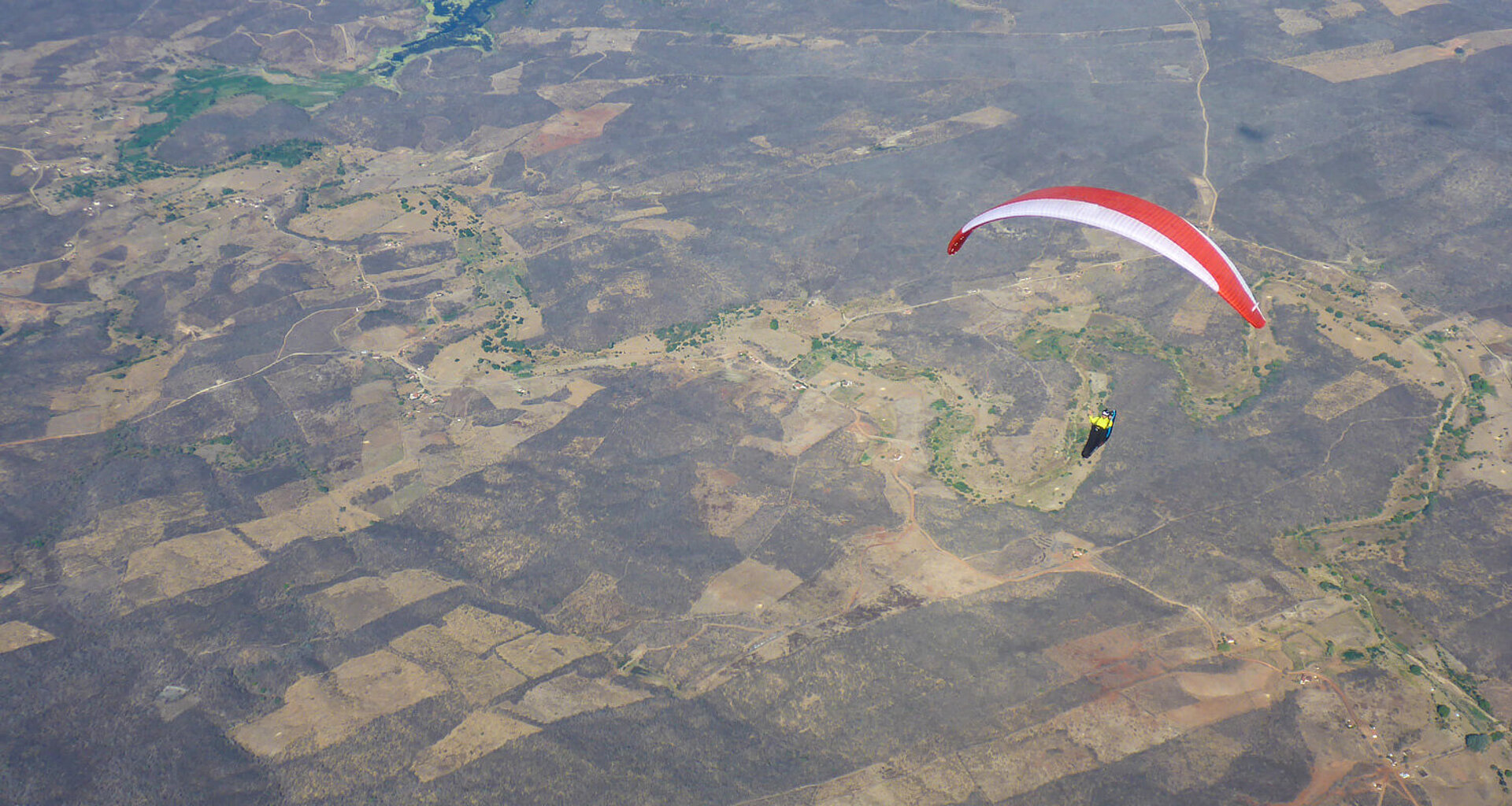The overriding aspiration of many paraglider pilots is to fly as far as possible. The north east of Brazil beckons cross country cracks every autumn. Chrigel Maurer, ADVANCE test pilot Patrick von Känel and four other Swiss paraglider experts left for Ceará last October, as a team, and there found a quite different sort of cross country adventure to deal with. They returned not only with a big bag of kilometres, but, most of all, with new and character-building experiences.
New Terrain, New Challenges
Both well-known Brazilian XC and world record hotspots Quixadá and Tacima have their special features. The takeoff is difficult at one, and the other requires some inhospitable real estate to be overflown due to miserly height difference. Tour operator and Brazil specialist Andy Flühler had long been on the lookout for a new starting point for long flights. When he finally stumbled upon the Caico regional airport there were, first, tough negotiations with local authority to be grappled with. Then the first paraglider was towed into the air by winch, and a long-under-wraps project got underway: namely, for a group of high quality members of the Swiss XC Liga, with the support of Andy’s team, to better the current 564 km benchmark.
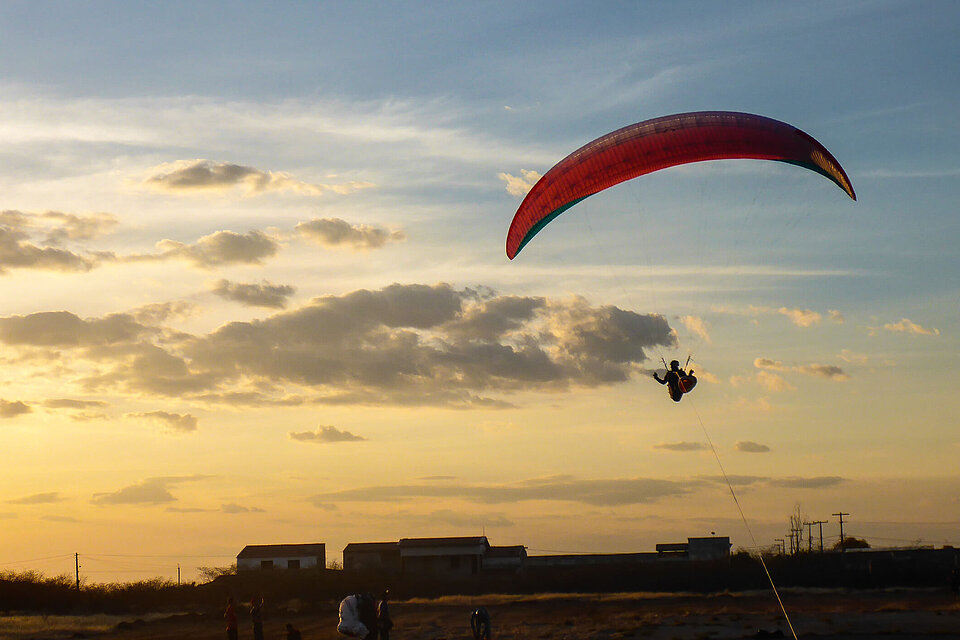

It’s 6:30 in the morning. 30 km/h of wind means a cobra pull-up. After turning round there’s a light pull on the rope, the vehicle proceeds slowly forwards, then, faster and faster, covers the whole 1000 m runway. The two imported high speed winches work well. On each run two paragliders are winched up in parallel. After release 950 m above ground the tow cables glide slowly to the ground under their braking parachutes. Even before they’ve touched down they have been reeled in. The handles stay with the winch driver and helper. Seven minutes after takeoff the pickups are at the end of the runway again. The next two pilots cross their fingers before launch.
After the first flights the Swiss pilots are well aware that cross country in the Brazilian flatlands requires a completely different set of skills than in the Alps. To begin with there’s the orientation and the endless expanse, the strong wind, the moody Black Urubu vultures and and and ... “Without GPS we had no idea of which direction we should fly,“ explained Patrick.
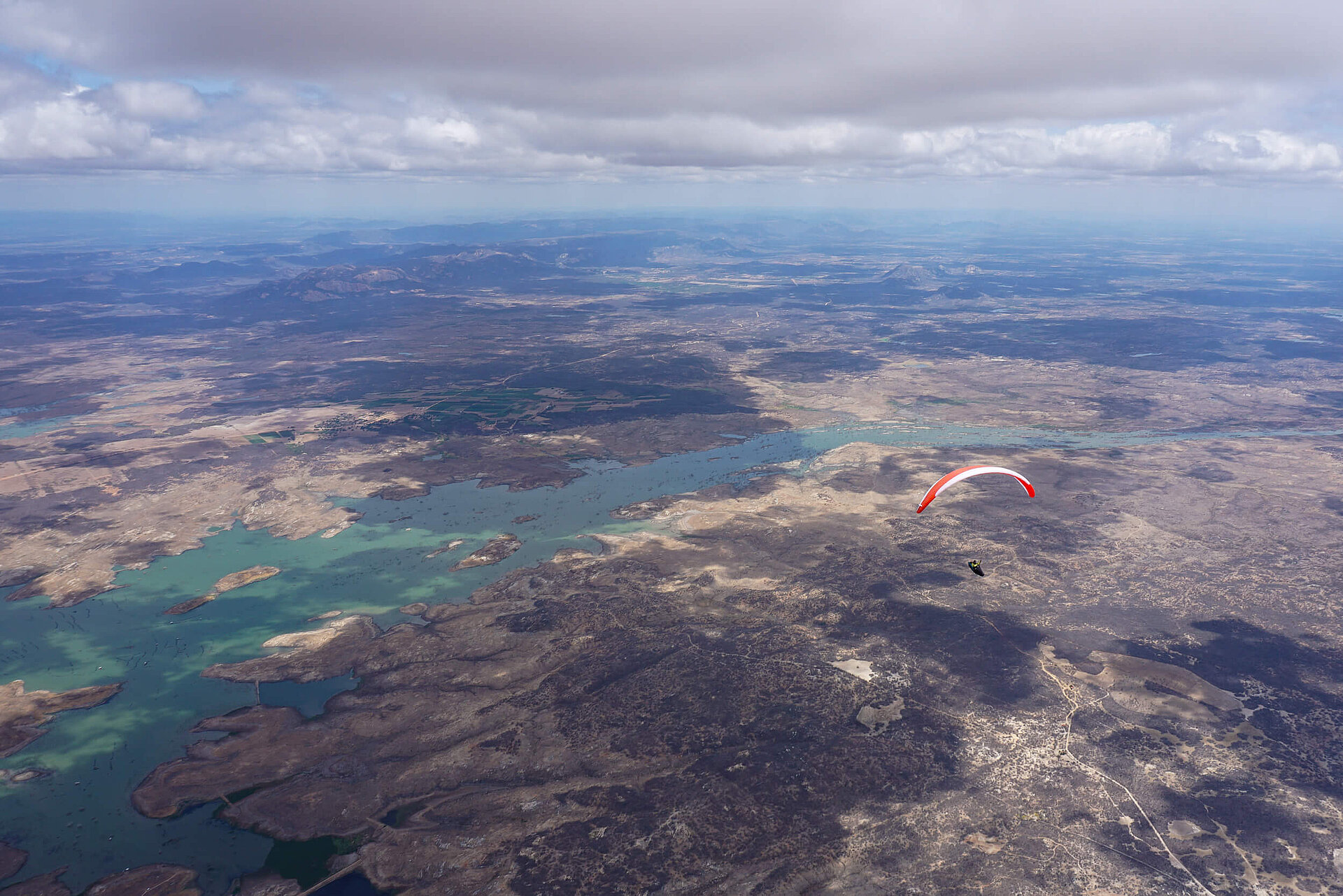
Against the Fireball
Although direction finding is difficult during the day, in the evening this all changes. Then there’s only one tactic; namely to fly directly into the sun until it disappears below the horizon at 17:50 hrs. When that happens you have exactly a quarter of an hour in which to continue gliding as far as possible, decide on a landing place, set down somewhere on the pampas and pack up in the last minutes of light. At 18:05 it’s pitch dark. This is the only way to get the most out of the day. Only then do you have the chance of outdistancing those who have gone before.

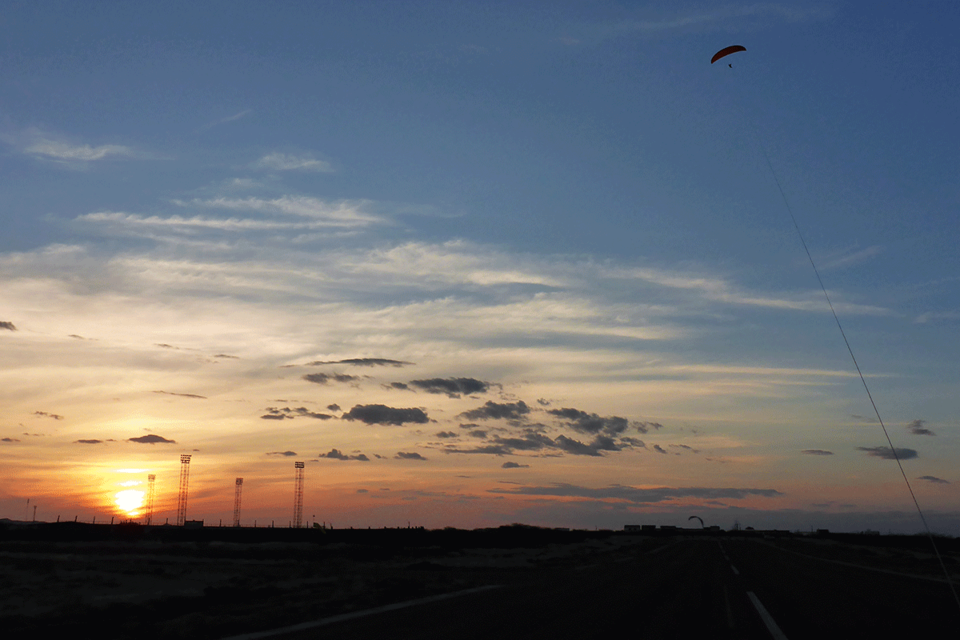
What added most to the cross country adventure in Brazil is the remoteness of this region and the simplicity that still prevails here. The people are very friendly and radiate a great joy in life itself, even though they have virtually nothing and live in very simple circumstances off the land. After landing on the Pampas there was usually no contact with the team apart from the tracker, and you find yourself completely alone. Often some walking is then called for until, somewhere, a house or settlement is reached. With a friendly “Bom Dia” you’ve almost always found the connection to the local population. Communication follows, primarily by gestures and the sign language of hands and feet. A helpful Brazilian is delighted to give you a moped ride on the dusty gravel road to the tar highway, where eventually your retrieve picks you up.
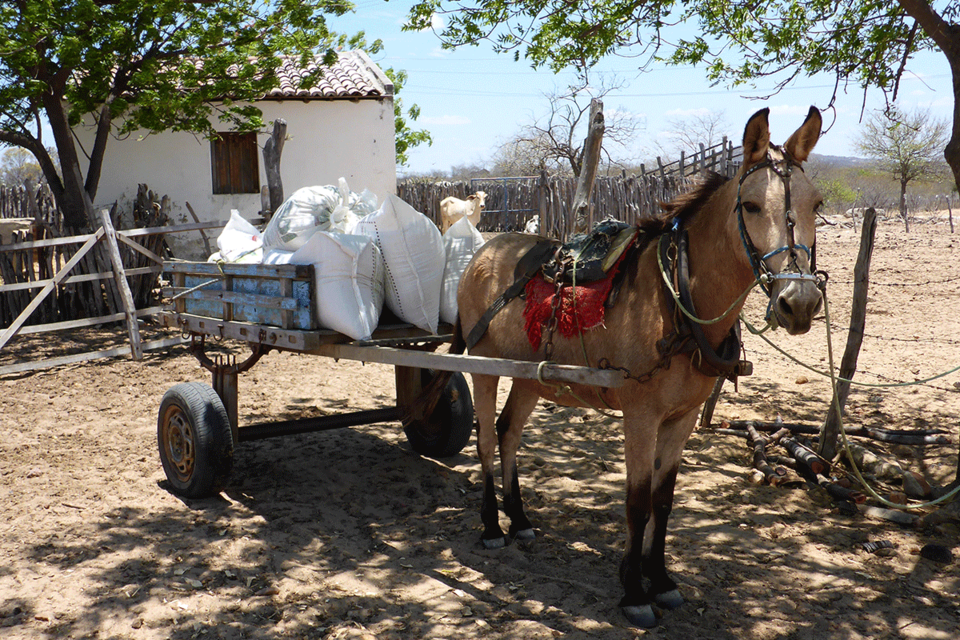
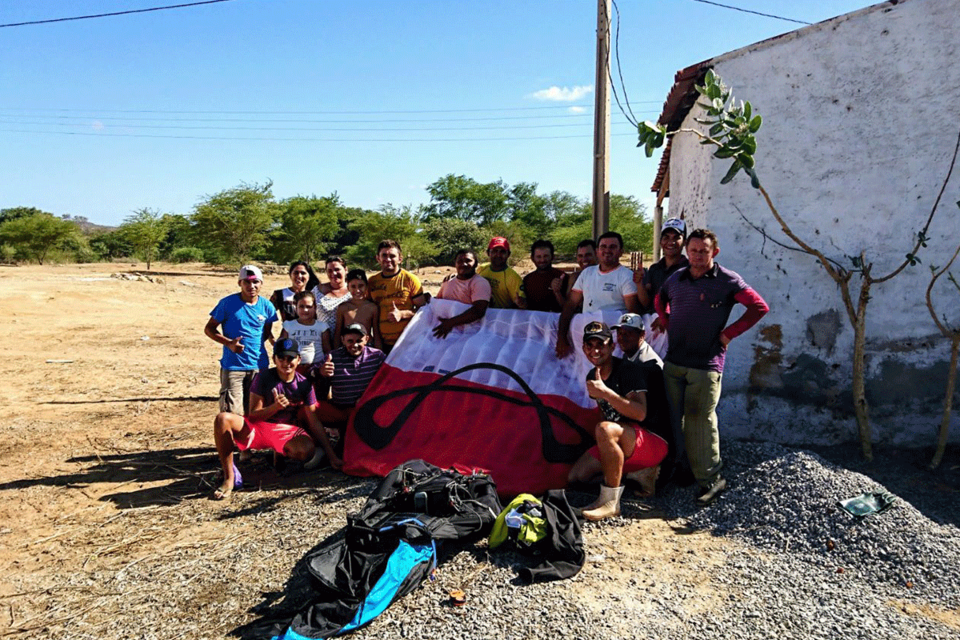

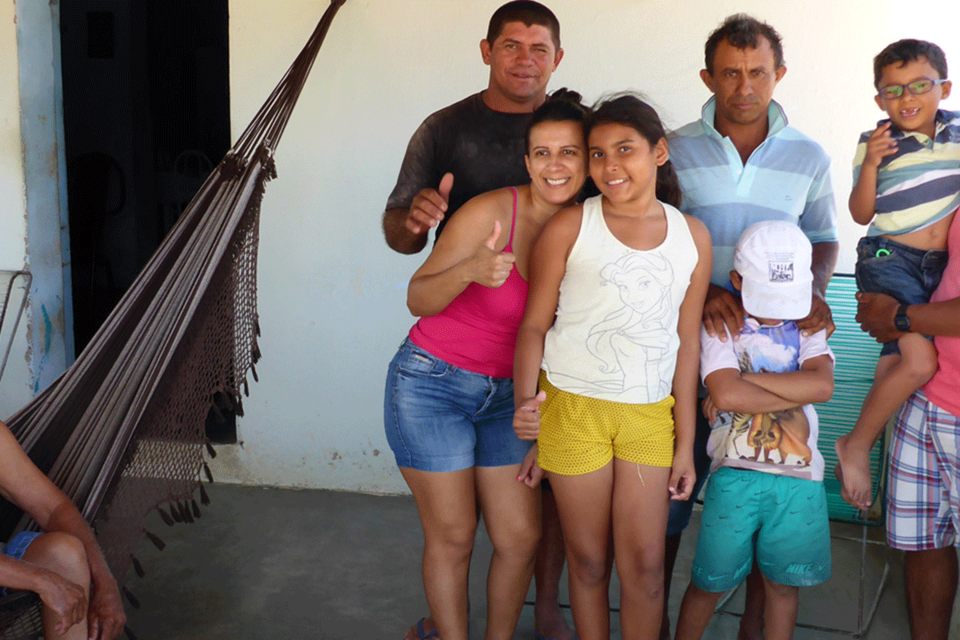

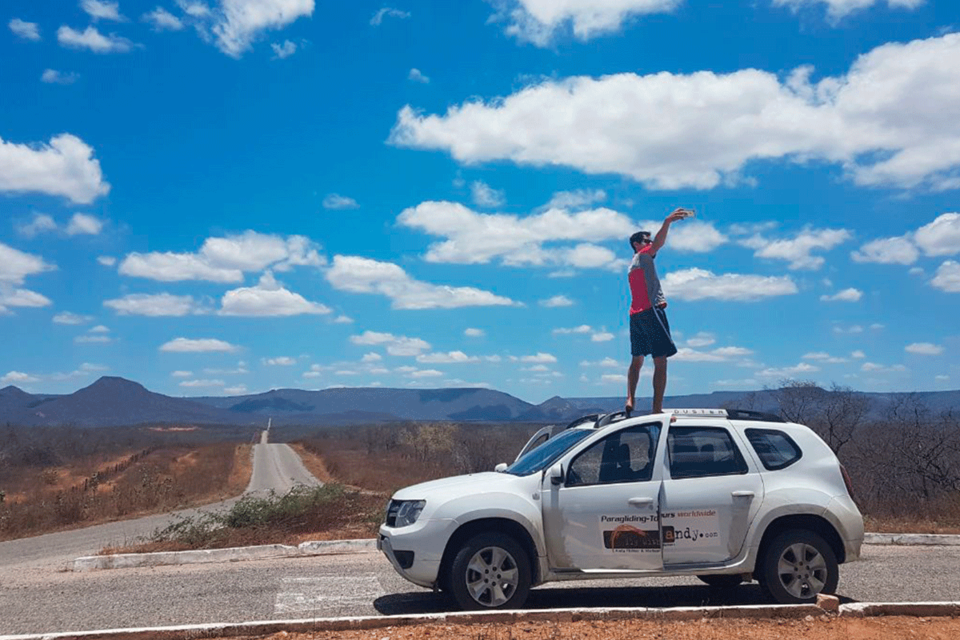
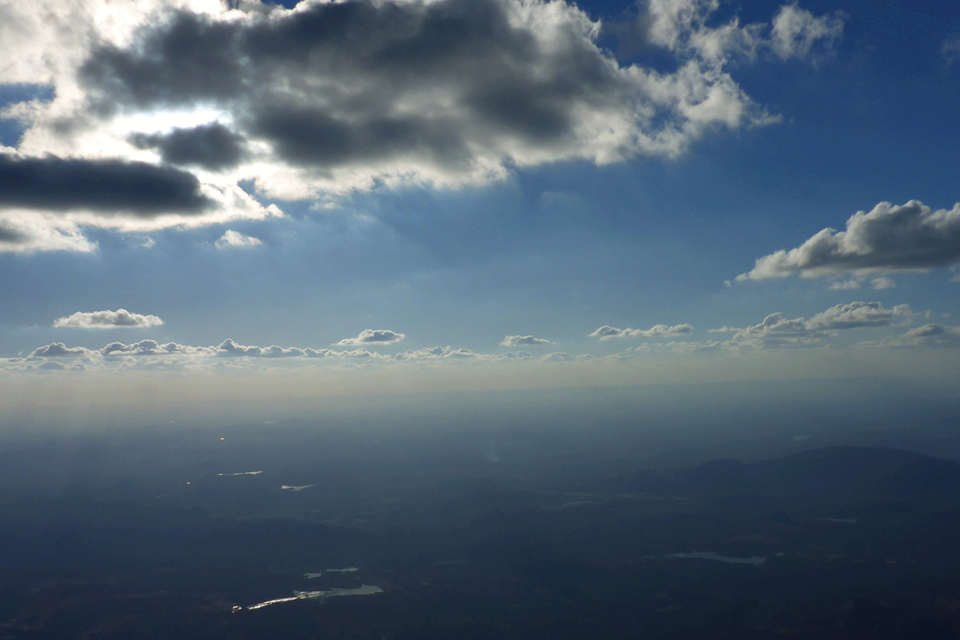
The Erlking in the spotlight
Observant Social Media followers of Chrigel Maurer have already spotted the ADVANCE Erlking in the pictures and films. Yes, it was a new IMPRESS 4, tested with a tail: and yes, it does have a seatboard. Who other than Chrigel Maurer, the father of the Impress series - the accessible light reclining harness for everyone - would be better suited, on his sometimes 11 hour flights, to test and evaluate this new harness in every detail? By contrast things got somewhat more difficult with the ADVANCE wing. After a promising start the two-liner cross country proto, intended for Chrigel, changed its flying behaviour as the days went by. Paraglider professionals and test pilots are used to nightly trimming and tweaking adjustment sessions, to setup their wings afresh. But facilities here were too limited, so Chrigel had to climb back aboard his Boomerang, and only swop with Patrick’s Omega now and then. Patrick, in the other hand, was able to notch up more than 50 hours with the new wonder weapon, and send first feedback reports to the development department in Thun.
Collective Strength
“We tackled this adventure as a team and could therefore achieve much more than if we had gone it alone”, summarised Chrigel Maurer. “Even though the days were only moderate, because of light winds, four of our pilots were able to exceed 500 km - only achieved previously by five other pilots.” After takeoff as a pair the teams of two tried stay together for their whole flight, to make it easier to find the best line. The team not only had to play this game in the air, but also on the ground. “Without a perfectly organised recovery we could never have achieved so much in the two weeks here”, said Chrigel. And even so it was mostly not possible to fly every day because the return drive usually took longer than the flight.
The world record distance was not actually reached because of the above, but for the wealth of personal experience and character-building time in the air much had already been achieved. Chrigel is sure: “Next year we will try it again; cross country flying in the desolate expanse of north east Brazil is one of life’s true adventures.”
The Team
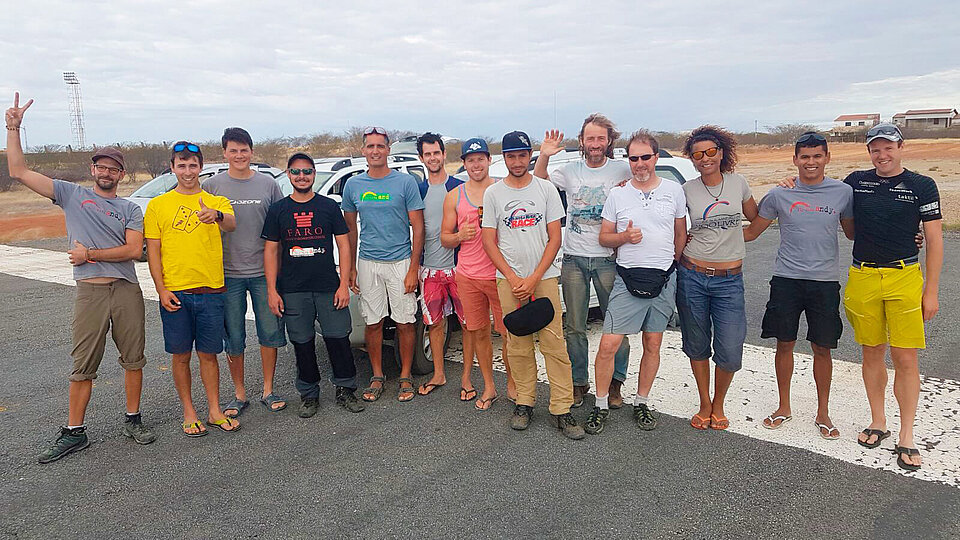
Adrian Seitz, Michael Sigel, Jan Sterren, Leandro Padua (Brazilian XC Pilot), Dio (Driver), Zoio (Driver), Patrick von Känel, Vagner Campos (Brazilian XC Pilot), Christian Erne, Gebi Abächerli, Simone (Organisation helper), Wagner (Driver), Chrigel Maurer



